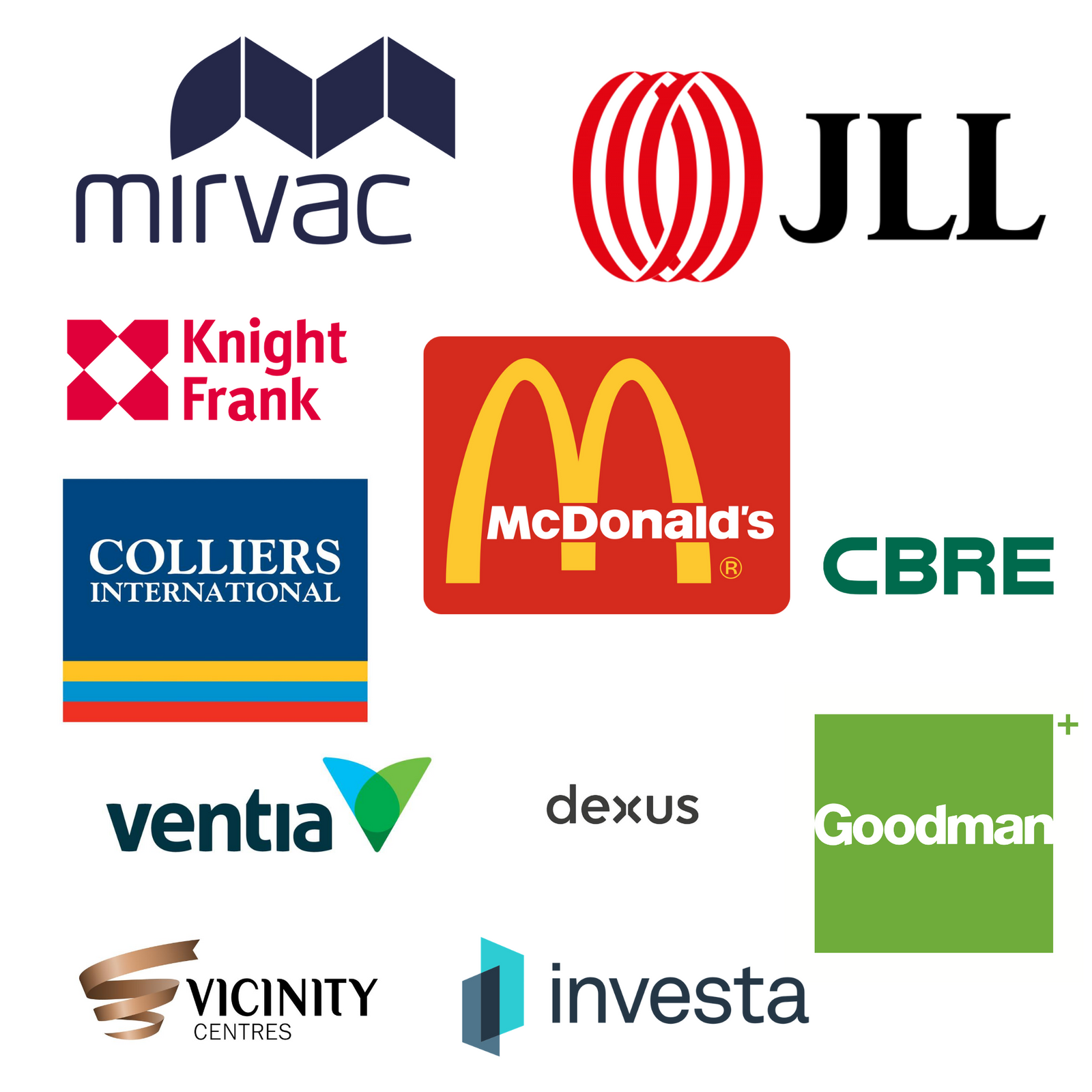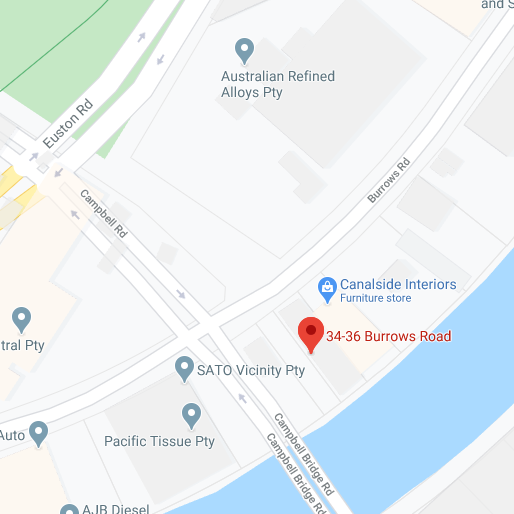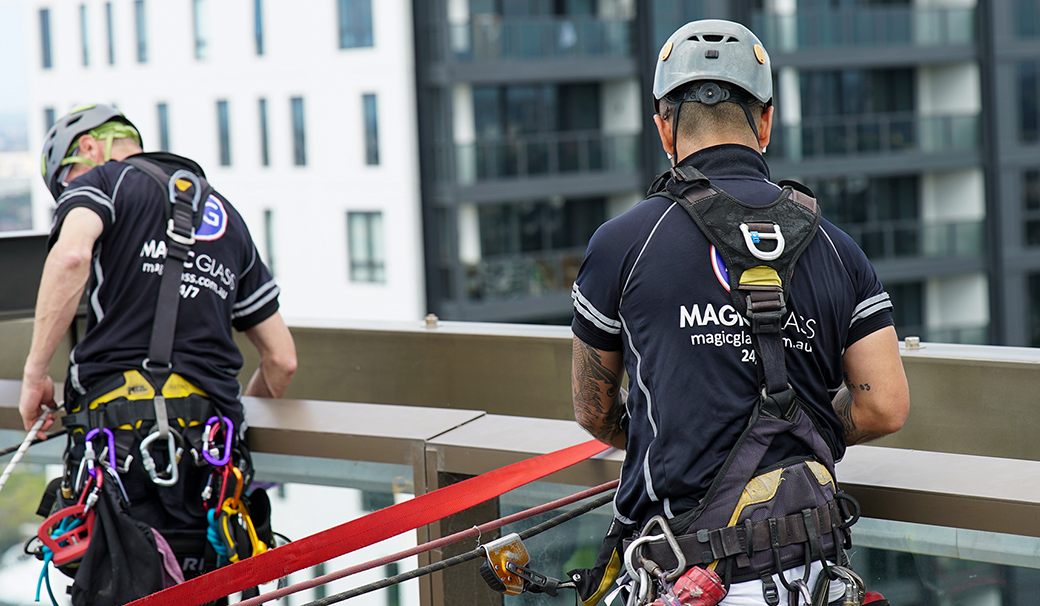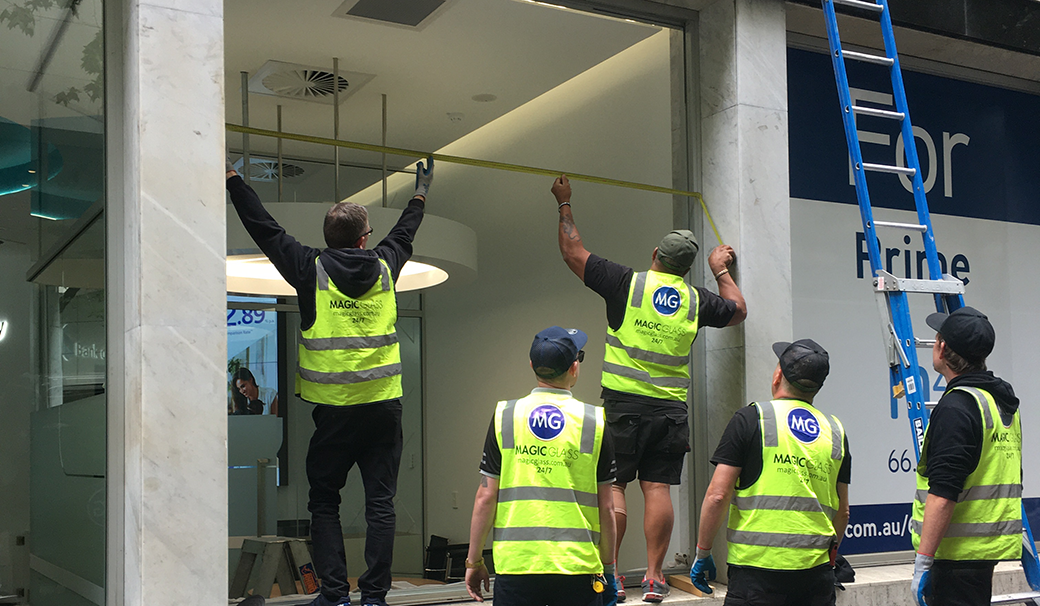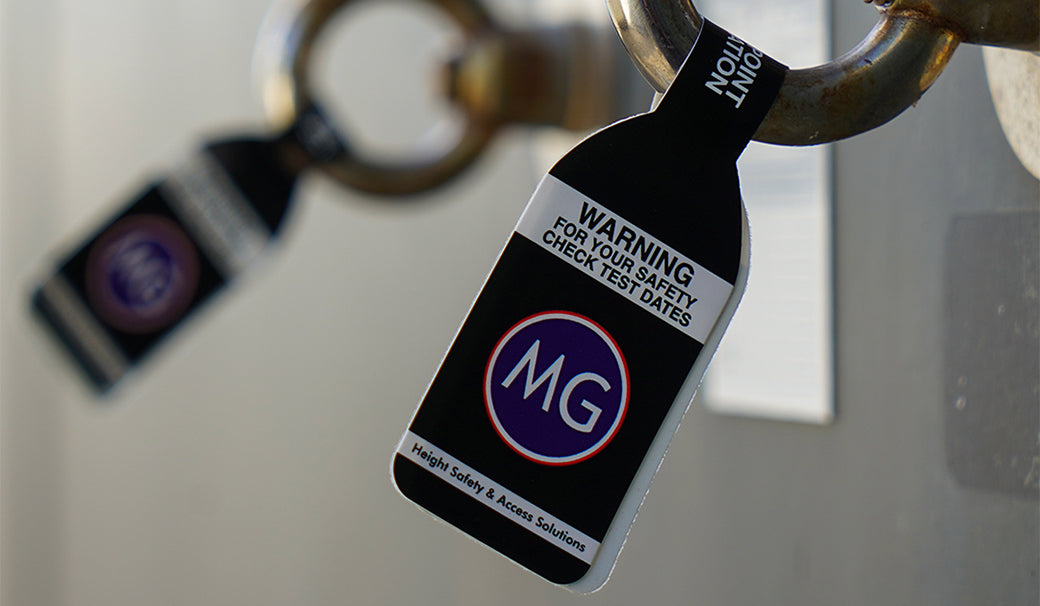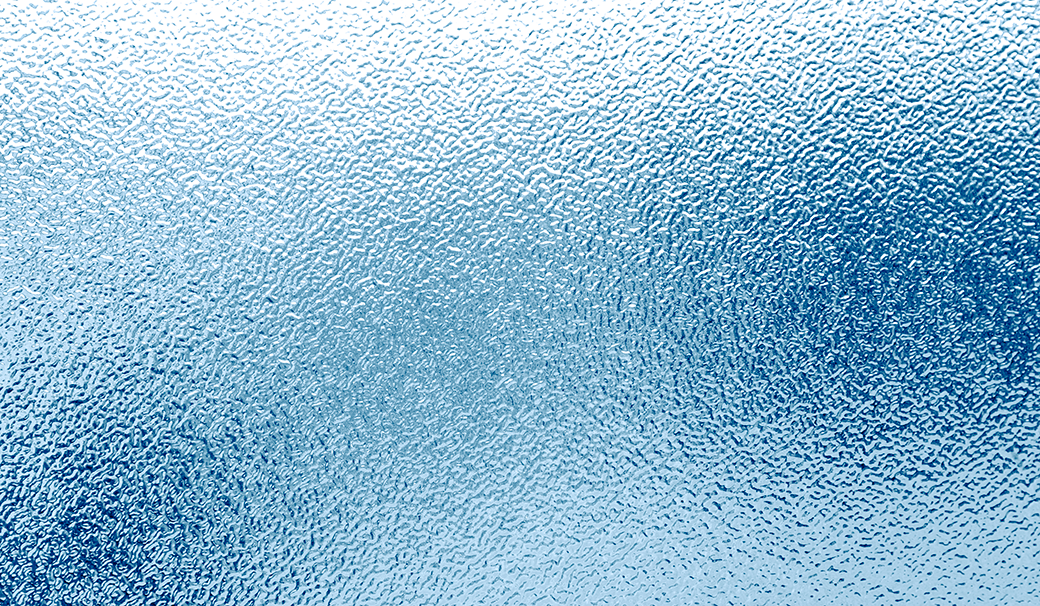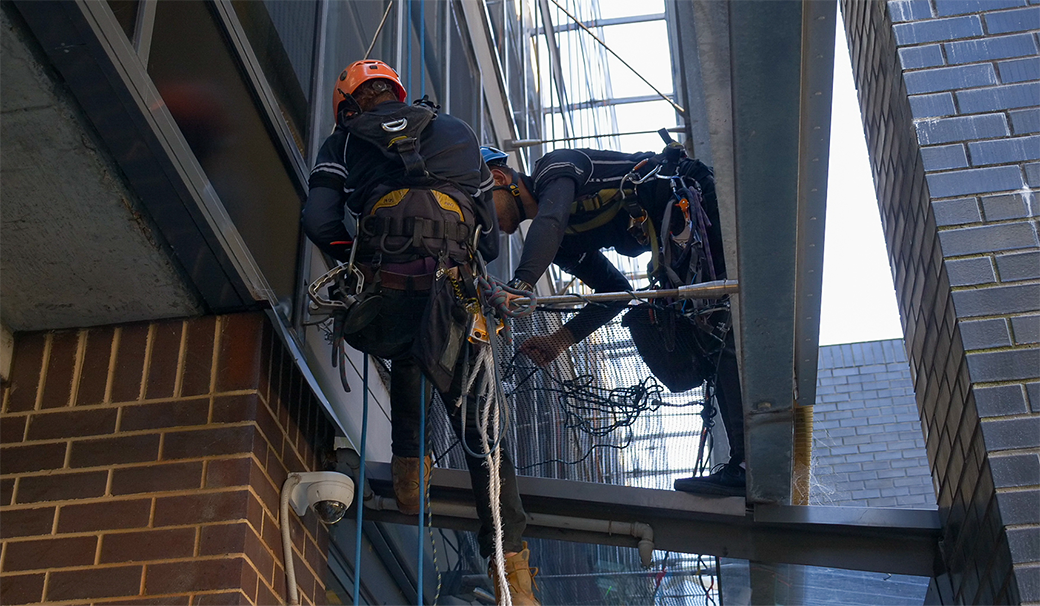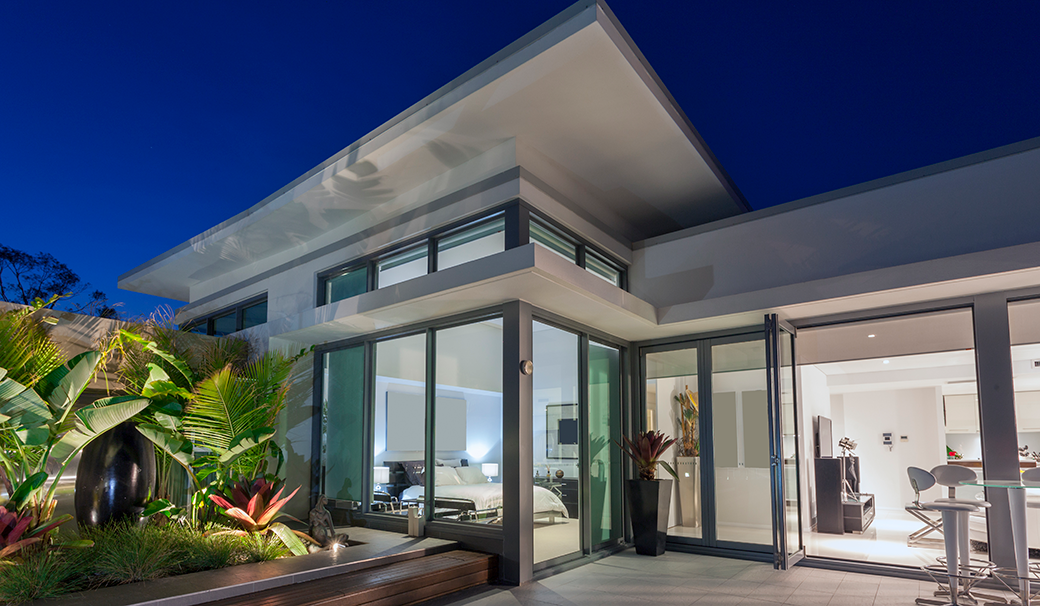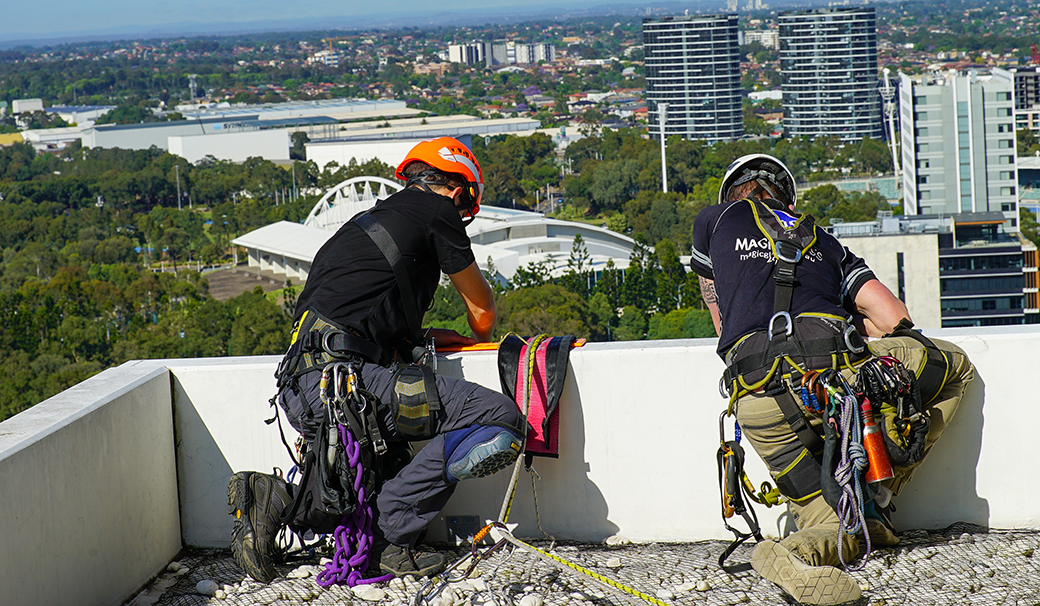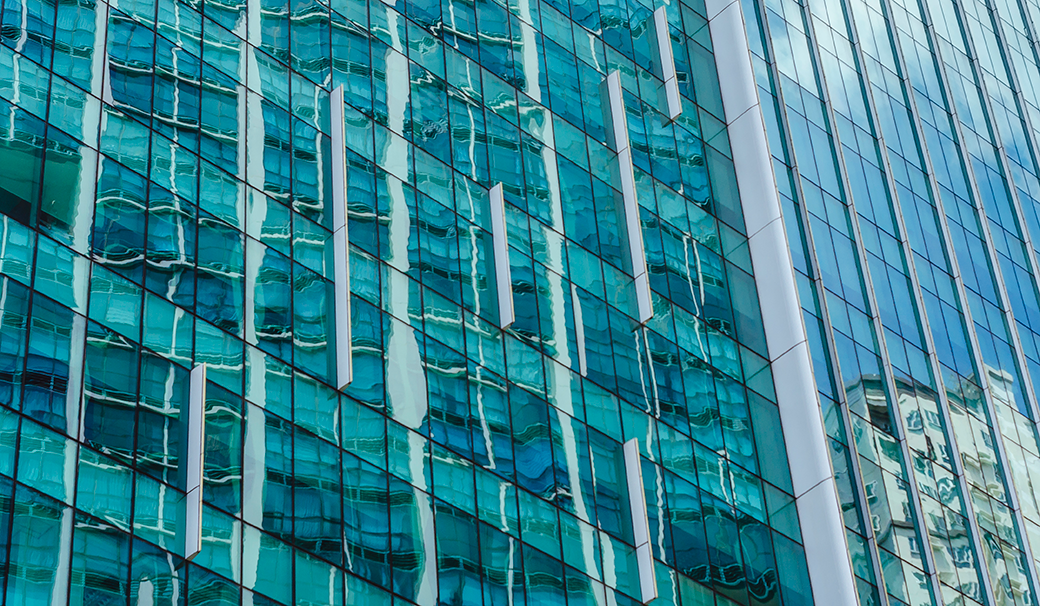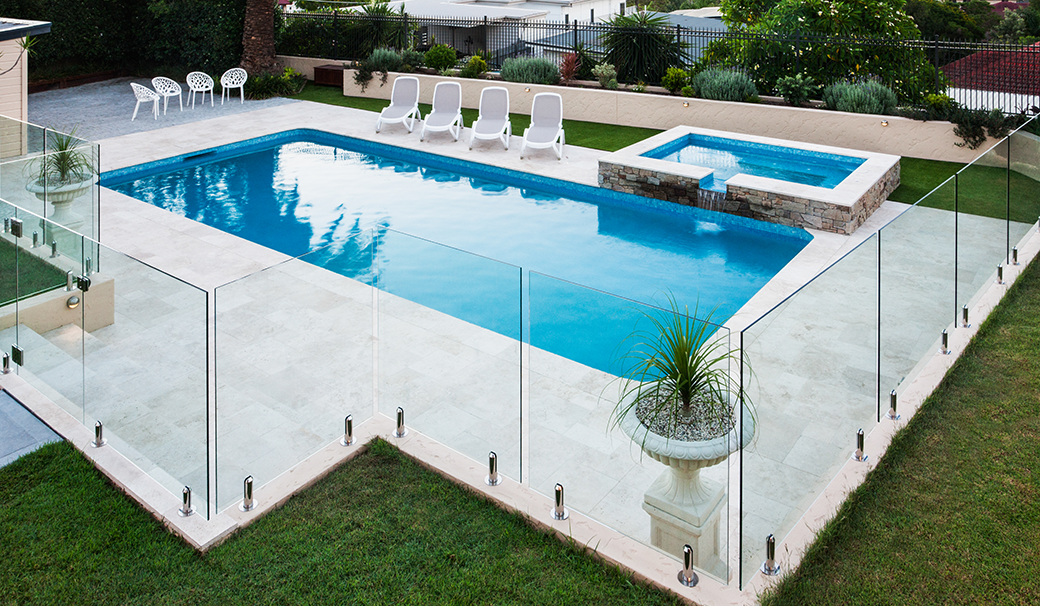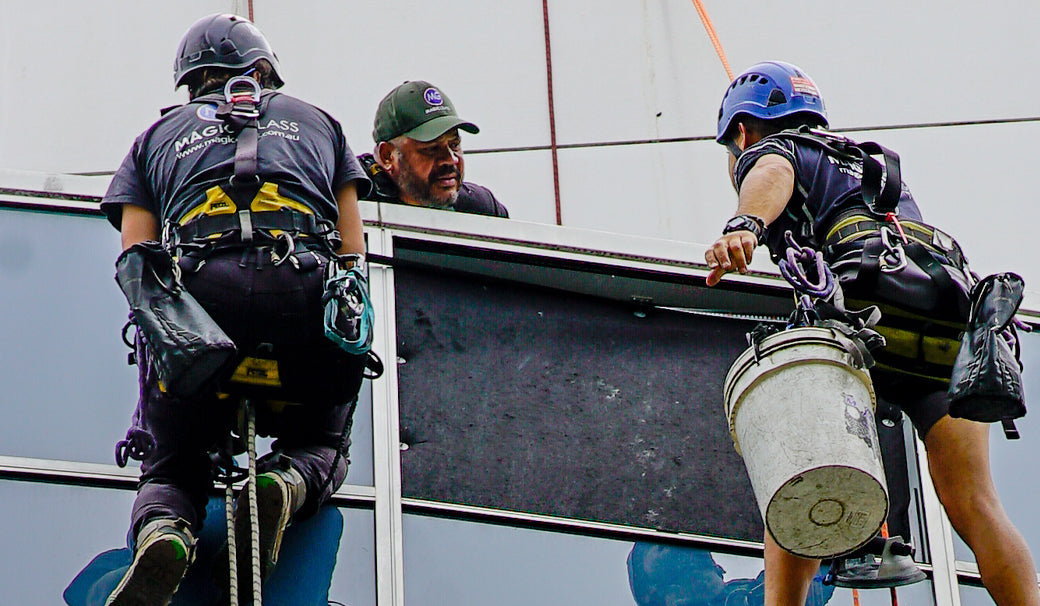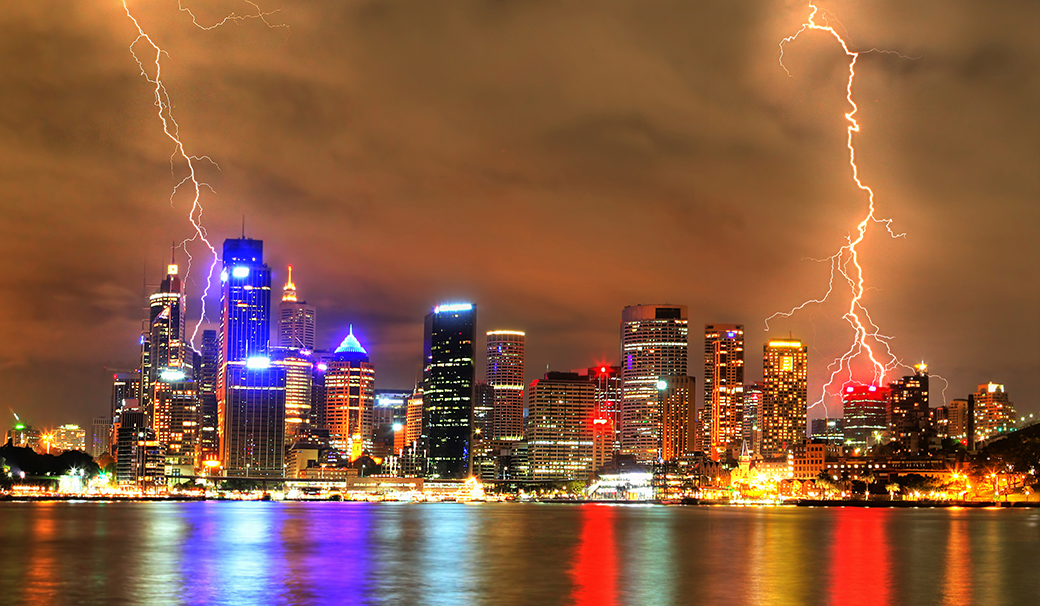Glass Blog
Rope access is a method used to reach high or difficult-to-access areas via a rope and harness system. It is commonly used to conduct a variety of work including glazing, cleaning, installation, restoration, repair, waterproofing, and painting.
What are the Benefits of Rope Access?
Rope access is the access method of choice for many building owners, property managers, strata managers, and facility managers. This is because it presents many benefits over alternative methods of access. Some of these benefits include:
- Efficiency: Rope access equipment can be assembled and disassembled very quickly. This reduces time requirements, allowing for a more efficient service.
- Safety: Rope Access Technicians must undergo extensive training in order to conduct rope access work.
- Versatility: Rope access allows workers to access areas that would not be accessible using other methods. It does not restrict mobility and can be used in an abundance of areas ranging from confined spaces to large-scale high-rise buildings.
- Environmentally Friendly: As rope access does not require the transportation of large, heavy equipment through the supply chain and on-site, it releases much fewer emissions than alternative access methods.
- Minimises Disruption: Compared to alternative height access methods, such as scaffolding, rope access has minimal disruption on a building and the building’s occupants.
If you require any work for your high-rise building or other hard-to-access structure, get in touch with Magic Glass. Our certified Rope Access Division offers a variety of services for both commercial and residential clients. These services include:
- External window and facade cleaning
- Height safety installation
- Make safe services
- Facade inspection and reporting
- Facade remedial repair
- Safety and debris netting
- Bird proofing and pest control
- Rust removal
- Facade painting and waterproofing
- Signage installation and removal
And more!
Contact Magic Glass for more information.
Regardless of the type of business you run, having a good storefront is critical in attracting customers, maximising security, and maintaining a solid business reputation.
What makes a shopfront good? Read on to find out.
Clutter-Free
No one wants to go into a store that looks cluttered and messy. Because of this, you should avoid putting too much signage and merchandise in your shopfront. Keep it relatively clear and make sure you clean it regularly.
Lighting
Making sure you have the right amount of lighting in your shopfront is also important in attracting potential customers. You want to have just enough lighting to illuminate your store and make it stand out, but not so much that it will appear overly-bright.
Security
Aside from drawing in customers, the main role of your shopfront is to keep your store secure. In order to achieve this, ensure the material your storefront is made from is strong and sturdy. If you want to install a glass shopfront, choose safety glass such as toughened or laminated glass. These glass types are significantly more resistant to force and less easy to break than standard annealed glass.
Easy to Maintain
Last but not least, for your sake, you want to ensure your shopfront is easy to clean and maintain. Select materials that stay cleaner for longer and don’t require excessive maintenance (such as glass and aluminium) over materials that get dirty quickly and require frequent touch-ups (such as timber).
If you’re wanting to install a new glass storefront in your business, call Magic Glass today. We can provide you with a free quote for a shopfront that will attract customers and keep your business safe!
As a provider of rope access services, Magic Glass is committed to ensuring the safety and stability of our projects. One key element of this is the use of anchor points, which are used to securely attach ropes and other safety gear to a structure or surface. Anchor points play a vital role in rope access work, and it's important to choose the right ones for each project.
To find out more about anchor points and why they are so important, read on!
What are Anchor Points?
Anchor points are fixed points on a structure or surface that are used to attach ropes, harnesses, and other safety gear. They are designed to withstand a specific load, and they are typically rated by a professional engineer or other qualified individual. There are many different types of anchor points, including:
- Natural anchor points: These are existing points on a structure or surface that can be used as anchor points, such as beams, columns, or other structural elements.
- Temporary anchor points: These are anchor points that are installed specifically for a rope access or fall arrest project and are removed when the project is complete. They may be made of materials such as steel or concrete, and they are typically installed by a qualified professional.
- Permanent anchor points: These are anchor points that are permanently installed on a structure or surface and are used for ongoing rope access work. They may be made of materials such as stainless steel or aluminium, and they are typically installed by a qualified professional.
Why are Anchor Points Important?
Anchor points are an essential component of rope access and fall arrest work, as they provide a secure attachment point for ropes and other safety gear. Without proper anchor points, rope access work would not be possible, as there would be no way to safely attach the ropes and harnesses.
In addition to being necessary for the work itself, anchor points also play a critical role in ensuring the safety of workers. Rope access work involves working at height and using specialised equipment, and anchor points help to ensure that the ropes and harnesses are securely attached and able to hold the weight of the worker.
How to Choose the Right Anchor Points
Choosing the right anchor points is essential for the safety and stability of rope access work. Here are some factors to consider when selecting anchor points:
- Load rating: It's important to choose anchor points that are rated for the specific load that they will be subjected to. This will depend on the type of work being done and the number of workers that will be using the anchor point.
- Compatibility with the structure: Anchor points should be compatible with the structure or surface to which they are being attached. This may involve considering the material of the structure, the size and shape of the anchor point, and any other factors that may affect its stability.
- Location: The location of the anchor point is also important, as it should be in a position that is easily accessible for the workers, doesn’t put workers in danger and doesn’t interfere with other elements of the structure.
Anchor points are an essential component of rope access and fall arrest work, and choosing the right ones is crucial for the safety and stability of the project. In order to ensure your anchor points are installed correctly and meet all relevant Australian safety standards, we recommend you get in touch with Magic Glass.
Our dedicated Rope Access Technicians are highly experienced in installing, inspecting and certifying anchor points of all different types for all different buildings.
For more information, or to get a free quote, call Magic Glass today!
Frosted glass is a type of glass that has been treated to have an opaque look on one side and a transparent or translucent look on the other.
It is made by applying a thin layer of metal, such as aluminium, to the surface of the glass. The metal is then heated and cooled in order to create the frosted effect.
The two main types of frosted glass are: wire-cut and sandblasted. Wire-cut frosting is when wires are used to cut into the surface of the glass in order to create an opaque pattern. Sandblasted frosting, on the other hand, is when abrasive material, such as sand, is blown onto the surface of the glass in order to create an opaque pattern.
Frosted glass is used to provide privacy without obstructing the view. It is often used on high-rise buildings, where the occupants of the lower floors want to be able to see out without being seen.
Frosted glass can also be used in a more decorative way, for instance as a window in the shower or bathtub. This allows natural light and air into the shower or tub while still providing some privacy for the building’s inhabitants.
If you’re looking for a way to add more sunlight into your home without compromising your building’s privacy, frosted glass is a great solution.
For any questions on frosted glass or to get a free quote, contact the Magic Glass team today.
Construction projects can generate a significant amount of debris, including materials such as wood, metal, concrete, and drywall. This debris can pose a safety hazard for workers and the general public, as well as a potential liability for the construction company.
Debris netting is a versatile solution for containing and managing construction debris, and it has a number of benefits.
Read on for Magic Glass’ guide to debris netting in the construction industry.
What is Debris Netting?
Debris netting is a type of netting made from durable, high-strength materials, such as polypropylene or polyethylene. It is typically used to contain and manage debris during construction, demolition, or renovation projects. Debris netting is available in a range of sizes and colours, and it can be custom-cut to fit the specific needs of a project.
Benefits of Debris Netting
There are several benefits to using debris netting on construction sites:
- Safety: Debris netting can help prevent accidents and injuries by containing debris and preventing it from falling or blowing onto workers or the general public.
- Liability reduction: Debris netting can help reduce the liability of construction companies by preventing debris from escaping the construction site and causing damage or injuries to nearby properties or individuals.
- Visual appeal: Debris netting is available in a range of colours, and it can be used to cover unsightly areas or construction equipment. This can improve the visual appeal of the site, particularly if it is located in a highly visible area.
- Cost-effective: Debris netting is a cost-effective solution for managing construction debris, as it requires minimal installation and maintenance. It is also reusable, which can further reduce costs.
- Damage prevention: Debris netting catches falling debris, preventing it from falling onto other parts of the building and causing damage.
Debris netting is a versatile and cost-effective solution for containing and managing construction debris. It can help improve safety, reduce liability, prevent damage, and improve the visual appeal of a construction site. It can, however, be challenging to install, especially at heights.
Fortunately, Magic Glass is here to help! Our dedicated Rope Access Division is highly experienced at installing, inspecting, and maintaining debris netting-regardless of the size or height of the building.
For more information, or to get a free quote, call Magic Glass today!
Glass is both a functional and decorative material that can be used in many ways to improve your home and increase its value.
From increased safety to aesthetics, here are Magic Glass' top 5 ways glass can be used to improve your home.
1. Safety
Installing safety glass is a great way of boosting your home’s security and preventing injury in the event of breakage.
Safety glass such as toughened and laminated glazing units are more susceptible to force and are therefore much more difficult to break. This means that the likelihood of someone breaking into your home or glass shattering from severe weather events is drastically reduced.
In addition, toughened and laminated glass are designed to either stay intact or shatter into smaller pieces (rather than sharp shards) in the rare event of breakage.
2. Energy Efficiency
Most of our homes’ temperature losses or gains occur through our glass windows or doors. Fortunately, there are ways in which we can minimise these effects and make our homes more energy efficient.
Installing glass panels that are either multi-glazed, laminated or have low-emissivity coatings will drastically reduce heat transfer through your windows. This will help keep your home cooler in the summer and warmer in the winter without blowing your energy bill through the roof.
For more information on these types of glass, read our How To Make Your Home More Energy Efficient Using Glass blog.
3. Openness
Another benefit of glass is that it can make your home appear more open. Having large windows, glass sliding doors and mirrors around your home can alter the look and feel of your property by making it seem more spacious and less closed-off.
4. Natural Light
Glass fills your home with natural light which not only helps save you money on electricity bills, but also boosts your mood and energises you.
Natural light boosts the look and feel of your home and adds value to your property.
Whether through windows, glass doors or skylights, there are an abundance of ways that you can increase natural light in and around your home.
5. Decoration
Last but not least, glass installs can be used to decorate your home.
Stained, frosted and etched glass can be used to add colour and edge to your home, as well as privacy.
In addition, glass splashbacks and frameless screens can be used for both decoration and functionality.
For more information on using glass to improve your home, contact Magic Glass today.
With our own fabrication facility and a team of experienced glaziers, we are able to custom-make glass specific to your space and your needs.
When it comes to preventing falls on worksites, there are a number of height safety options you can consider. One of these options is edge protection.
What is Edge Protection?
Edge protection is a type of height safety system that involves physical guardrails around the edges of rooftops and fragile at-height surfaces, including skylights and polycarbonate sheeting. These physical barriers can be permanent or temporary.
Edge Protection Requirements
Each edge protection system must satisfy a number of criteria to be considered safe and compliant. They must be provided at every open edge of a work platform and be strong enough to withstand the force of someone falling.
Edge protection systems must also be comprised of a handrail, mid-rail, and toe-board, or a handrail and brick guard.
The specific requirements of your edge protection system will differ depending on factors such as roof pitch, surface, and length. Below are some general components all edge protection systems must include.
- Top, mid and bottom rails or toe-boards with gaps not exceeding 450 mm. Where toe-boards are used in place of bottom rails they should be able to withstand the likely impact loads.
- Toe-boards or mesh infill to prevent tools, materials or debris falling from the roof, unless exclusion zones that prevent all personal access below the roof edge are in place.
- No gap between the roof edge, including the gutter, and a guardrail located outside the roof line exceeding 100 mm.
- A clear distance between the roof cladding and the bottom rail of no less than 150 mm and no greater than 275 mm.
- A guardrail height above the roof surface of no less than 900 mm (for roofs with a pitch over 10 degrees, the effective height should be measured from a point 300 mm inside the roof edge).
- Infill panels are used where the pitch of the roof exceeds 26 degrees.
Cladding systems are external wall systems that can be applied to the outside of buildings. They are used on both residential and commercial buildings, and offer numerous benefits including additional structural protection, noise and heat insulation, and improved aesthetics.
There are several different types of cladding, all of which have various pros and cons. Read on to find out about 6 of the most common types of cladding.
Vinyl Cladding
Due to its high durability, visual appeal, and low-cost, vinyl cladding is very popular in and around Sydney.
Made of a mix of PVC and other materials, vinyl cladding typically comes in the form of horizontally-placed panels. These panels can also be fitted with additional layers of insulation, allowing for greater thermal control within the building.
Compared to alternative cladding options, vinyl is considerably more lightweight, allowing panels to be completely flexible when covering a building. They are also available in countless colours, allowing for greater design versatility.
Timber Cladding
Timber is another popular material choice for cladding. It allows for an aesthetically pleasing finish as well as improved thermal insulation. Timber cladding is also eco-friendly and a great way for building owners to reduce their carbon footprint.
Timber cladding can, however, be costly and tricky to maintain. You’ll likely need to re-paint or re-stain your timber cladding every 3-5 years and take extra care to protect it from pests and rotting.
Stone Cladding
Stone cladding is more common for residential buildings rather than commercial buildings. It provides an elegant, luxurious finish for homes and is easy to maintain and highly effective in preventing moisture from getting in.
The main drawback of stone cladding is that it can be extremely expensive. Both material costs and labour/installation costs are very high.
Metal Cladding
Metal cladding, particularly aluminium cladding, is another very popular choice in Sydney. It provides a shiny and contemporary look for both residential and commercial buildings.
Metal cladding is popular because it’s versatile, easy to work with, lightweight, low-maintenance, cost-effective, and energy efficient. It is, however, susceptible to denting and is a poor sound insulator.
Brick Cladding
Brick cladding is another great option for adding a stylish touch to your building’s exterior. It is highly versatile when it comes to design, allowing for colour and textural customisation.
As brick is a very sturdy material, it provides a high level of protection against the elements and is very easy to maintain.
The installation of brick cladding can incur high labour costs, however, so it is one of the more expensive cladding options.
Glass Cladding
Last but not least, we have glass cladding. This type of cladding is most commonly used on commercial buildings to boost aesthetics and provide a modern and unique feel. It is also a great thermal insulator, requires little maintenance, and is capable of withstanding harsh weather conditions.
Glass cladding can, however, be expensive to install and clean, and is unsuitable for earthquake-prone areas.
For all your cladding installation, replacement, and maintenance needs, get in touch with Magic Glass. Our dedicated Rope Access Division can offer cost-effective and discrete cladding services for all buildings of all heights.
- Architectural Glass Solutions
- Building Maintenance
- Commercial Glass Installation
- Commercial Glass Replacement
- Commercial Glass Services
- Commercial Glazing
- Custom Glass
- Facade Services
- Glass Installation
- Glass Projects
- Glass Solutions
- Hi-Rise Glass
- High Rise Glass Services
- Rope Access
- Sydney Glass Company
If you’re planning on installing a glass fence around your pool, an important decision you’ll have to make is whether you want to get framed or frameless fencing.
Both have their pros and cons, so having a solid understanding of both fencing types will help you determine which is best for you and your needs.
Frameless Glass Fencing
As the name suggests, frameless glass pool fencing is composed of sheets of glass held in place at the bottom rather than by an entire frame around the panel. This type of fencing must be made from safety glass, so it is highly strong and durable, and significantly less likely to cause injury in the rare event of breakage.
Frameless glass pool fencing is becoming more and more popular in Australia. As it gives the illusion that there is no fence at all, many people choose frameless fencing as it is more aesthetic and does not obstruct the view of their outdoor area. Frameless glass fencing also allows for greater visibility of the pool, so it is easier to supervise children and pets.
The main drawback of frameless glass fencing, however, is that it is generally more expensive than framed options. This is because the glass panels are secured to the ground either with cement or highly-durable stainless steel spigots, which incurs greater labour, equipment, and material costs.
In addition, the glass panels in frameless fences need to be either toughened or laminated safety glass. So glazing costs are likely to be higher too.
Framed Glass Fencing
Most types of framed glass pool fences these days are semi-framed. This means that rather than the entire panel being framed, there is framing only in the space that connects two glass panels together, with the top and bottom of the glass being left clear.
This type of pool fencing provides many of the same benefits of frameless fencing. There is slightly more view obstruction, however, and potentially more maintenance requirements.
One of the main advantages of semi-framed glass fencing is that it is notably cheaper than frameless fencing. Semi-framed pool fences can be up to 30% cheaper than frameless pool fencing, making it the ideal choice for lower budgets.
Both types of pool fencing are very durable and relatively low-maintenance. Determining which is best for you will ultimately come down to your personal preference and budget.
For more information, call Magic Glass. We will be able to find the perfect glass fencing for your pool, ensuring all Australian Pool Safety Standards are met.
An integrated management system (IMS) is a single system that combines two or more management systems, such as a quality management system (QMS) and an environmental management system (EMS). The goal of an IMS is to integrate the various management systems and processes within an organisation into a single, cohesive system. This can improve efficiency, reduce duplication of effort, and provide a more holistic view of the organisation's operations.
At Magic Glass, our integrated management system has been established in line with the following international standards:
- ISO 9001 Quality Management System
- ISO 14001 Environmental Management System
- ISO 45001 Occupational Health and Safety Management System.
ISO 9001 Quality Management System
ISO 9001 outlines the requirements for a quality management system (QMS). This standard is based on several quality management principles, including a strong customer focus, the motivation and implication of top management, the process approach, and continual improvement.
By implementing a QMS established in line with this standard, Magic Glass has been able to improve our efficiency, reduce costs, and increase customer satisfaction by ensuring our clients get consistent, good-quality glazing and rope access products and services.
ISO 14001 Environmental Management System
ISO 14001 outlines the requirements for an environmental management system (EMS). This standard is used by organisations to help minimise their environmental impacts and ensure compliance with associated regulations.
By implementing an EMS established in line with this standard, Magic Glass has been able to maximise the sustainability of our activities and reduce practices that are potentially harmful to the environment.
ISO 45001 Occupational Health and Safety Management System
ISO 45001 outlines the requirements for an occupational health and safety management system (OHSMS). It helps organisations mitigate the risk of injuries and illness in the workplace.
By implementing an OHSMS based on ISO 45001, Magic Glass has been able to minimise the occurrence of injuries and illnesses in our workplaces, improve our health and safety performance, and ensure compliance with related regulations.
ISO Certification
In order to become certified in the above international standards, Magic Glass has undergone thorough certification processes and regular audits by ISO representatives. This ensures that we are consistently meeting the requirements of each standard, allowing us to offer top quality, safe, and environmentally-friendly products and services for our customers.
If you own or manage a high-rise building, it’s your responsibility to ensure that it is safe for all residents, visitors, workers, and passer-byers. If your building is deemed unsafe and injury occurs, you can be held liable.
One of the best ways to avoid this is to familiarise yourself with common defects that can occur and how to best deal with them. Read our blog on common building defects for more information on how to identify them. Otherwise, read on to find out how to best deal with high-rise defects.
Handling Building Defects
Different buildings will encounter different defects. The process of dealing with these defects can be generalised, however. Here are some top tips:
Remember that ignorance is not always bliss.
As we’ve previously stressed, if you own or manage a building, any defects that occur are your responsibility. Because of this, you want to be aware of how to identify any potential issues and have a basic idea of how to remedy them.
Be safe, not sorry.
Thorough and regular building inspections by accredited professionals, such as Magic Glass, are a must! They will identify any potential issues before you notice them. Not only will this ensure safety in your building, but it will also save you money as repairing damage in its early stages is much less expensive than repairing it a few months in.
In NSW, for minor defects, you have two years to start the process of getting the builder or developer to fix the defect. For major defects, you have six years. If your building is outside the warranty period, you may have to fund rectification yourself.
Sharing is caring.
Make sure you report defects to people who need to know. This will include your owners corporation, but also your insurer(s) and Fair Trading (especially if the defect is major). You will also need to inform residents and other building occupants if necessary.
Keeping good records is also important. Records are needed in case there are disputes and to demonstrate to future buyers that the building is well-maintained and safe.
Handling building defects can be stressful. Fortunately, Magic Glass is here to help. We offer fast, thorough, and cost-effective facade inspection, repair, and replacement services. Our experienced Rope Access Division allows us to carry out these services discreetly for all buildings, regardless of height or size.
Contact us today for more information!
Whether you own a house or manage a commercial property, making sure its facade is sufficiently waterproofed is a must.
What is Waterproofing?
Waterproofing is the process of applying a physical barrier or waterproof membrane to the exterior of a building to prevent moisture penetration.
Why is Waterproofing Important?
Waterproofing helps prevent a number of structural and health issues associated with moisture ingress. These include:
- Steel corrosion
- Concrete cancer
- Fungal growths
- Mould and mildew
- Water logging.
How Do You Identify Waterproofing Issues?
There are a number of tell-tale signs that indicate waterproofing. These include:
- Blistering and/or peeling paint
- Bubbles in the paint that hold water
- Mould, mildew, and fungal growths
- Rust stains
- Cracked walls
- Dampness.
If your commercial or residential building needs waterproofing, get in touch with the Magic Glass team today. Our dedicated Rope Access Division can offer discrete, cost-effective, and efficient waterproofing services for all buildings, of all sizes.
Contact us today for a free quote.



